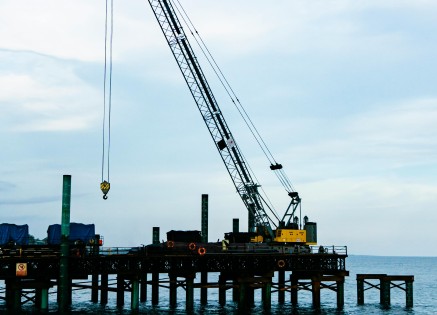Copyright © 2025 lmitac.com All Rights Reserved. Contact - Terms and Conditions - Privacy Policy - Quality Policy - Become an instructor - Vacancies - Sitemap
London Maritime Academy is a trade name for London Premier Groupversion: 2.9.0
London Maritime Academy is a trade name for London Premier Group

Posted on : 5/29/2025, 10:03:40 PM
One question has haunted the shipping industry forever: how to create a fast, efficient, and easy delivery? Smart shipping is a new trending technology that might make or break the way we experience shipping. Since its acceleration to fame, we can't help but ask, is it reliable? Will this optimization tool be affordable?
In this article, we'll explore smart shipping and what this new technology envelopes
Smart Shipping is about using data from onboard sensors and a cloud-powered platform to transform how a ship carries cargo from port to doorstep. This innovative solution takes you beyond old-school labels, letting you track shipments in real time and receive status updates instantly.
Plus, you can manage multiple accounts and profiles from one friendly, online interface, this way keeping your data secured and your operations running smoothly without any extra hassle.
The starter pack of Smart Shipping is a stack of modern technologies. IoT modules feed streams of data into AI-driven decision engines, while digital twins mirror every ship in a global network. These systems run on a platform that ties together navigation, logistics, and customs management.
On the other hand, active and inactive sensors switch between modes to conserve energy and monitor fuel consumption, optimizing routing and cost efficiency. While advanced predictive maintenance modules use live tracking to flag potential issues before they stall your freight, ensuring maximum uptime.
Moving further, blockchain-based systems can secure contracts and track every transaction, from funding agreements to discounted rates, all while guaranteeing data integrity. Integrated tools help you view real-time ratings and choose the best transport options, such as LTL, truckload, rail, or parcel shipments, all managed through one seamless, friendly, online interface.
Beyond that, materials handling tags ensure the quality of sensitive cargo, and distributed ledger protocols speed up funding approvals as each shipment milestone is met.
Numerous carriers, from major metro ports to niche organisations, are piloting Smart Shipping and smart-ports. Partnerships with FedEx, USPS, and leading rail and truckload transport providers have led to mixed-modal projects that bridge inland waterways and coastal routes.
In some demos, autonomous modules handle customs clearance, while predictive analytics adjust supply chains on the fly. Some small operators even use BBB ratings and digital feedback loops to build trust, while NYSE: GSL-listed lines explore funding for full-scale IoT rollouts. These success stories from ships prove that Smart Shipping can power anything from bulk freight logs to individual parcel deliveries at your door.

Through providing Smart Shipping, businesses save on costs, time, and headcount. Automated processes cut downtime, streamline management, and lower rates on discounted services. You enjoy cleaner operations, with custom reports tracking fuel consumption, carbon emissions, and environmental gains.
A trusted global network offers real-time insights into supply movements, transforming logistics into a strategic asset and unlocking new opportunities to optimize budgets.
In addition, dynamic pricing models let you lock in favorable rates days in advance, while consolidated invoicing brings transparency to billing and helps you budget for seasonal peaks or sudden spikes in supply without sacrificing service levels.
Ultimately, Smart Shipping empowers companies to automatically deliver unmatched value to customers, building a strong reputation in a competitive market.
Of course, Smart Shipping doesn't come with ease. Organisations must protect customer data, secure password rights, and comply with shifting regulations. How should they do that? Well, integrations with ERPs like NetSuite or email systems demand robust tools and custom modules.
Teams also need ongoing support to learn new systems in a Maritime Training Academy, handle subscriptions, and manage updates without disrupting operations.
Moreover, organisations must consider sustainable certification, container design features for IoT retrofitting, and cross-border transportation complexities.
Step-by-step modules and detailed tasks ensure teams don't miss critical details, while forgot password flows and secure username policies maintain system continuity.
It’s clear that Smart Shipping is more than a label—it’s the future of maritime logistics. By merging real-time data, advanced systems, and autonomous operations, it unlocks new levels of efficiency, quality, and customer satisfaction. Whether you’re a shipping company, an SME business, or a local carrier, the time to apply these innovative solutions is now. Grab this opportunity, learn the tools, and share your success—because with Smart Shipping, every shipment sets sail toward a smarter, greener world.
Smart shipping refers to the integration of digital technologies, such as IoT, AI, blockchain, and cloud platforms, to optimize every aspect of maritime logistics. It enables real-time tracking, predictive maintenance, autonomous operations, and sustainable shipping processes.
Smart shipping relies on:
Smart shipping helps businesses:
Yes. Many smart shipping solutions can be retrofitted onto existing fleets using IoT modules, digital sensors, and software-based platforms. This makes it accessible even to small and medium-sized shipping companies.
A digital twin is a virtual replica of a physical ship that simulates real-time performance. It helps operators test new routes, optimize fuel use, and forecast equipment failures before they occur, saving time and cost.
Using AI algorithms and sensor data, predictive maintenance monitors machinery performance in real-time and alerts operators before breakdowns happen. This reduces downtime, extends equipment life, and enhances safety.
As with any digital solution, cybersecurity is crucial. Smart shipping platforms must protect sensitive data, enforce strong password policies, and comply with global maritime cybersecurity standards such as the IMO’s MSC-FAL.1/Circ.3 guidelines.
Absolutely. Smart shipping reduces CO₂ emissions, tracks carbon footprints, and supports green shipping initiatives by optimizing fuel use and enabling hybrid or alternative energy options like hydrogen cells and electric batteries.
Initial investment varies by fleet size and technology scope, but cost savings over time are significant. Lower fuel use, fewer delays, and streamlined logistics lead to rapid ROI, especially when paired with sustainable funding or government grants.
Consider enrolling in a Smart Shipping or Maritime Technology training course—available in major hubs like London, Dubai, and Singapore. These courses teach the fundamentals of maritime automation, IoT systems, and digital logistics platforms.